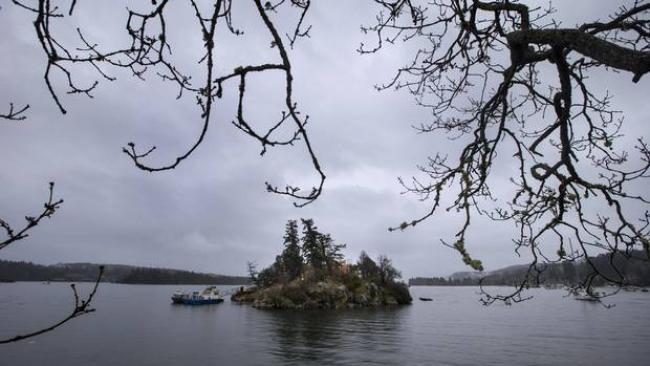Articles Menu

A new LNG project envisioned for Vancouver Island would accept natural gas via an underwater pipeline that would weave from Washington State through the Gulf Islands, according to a proposal released Tuesday.
The liquefied natural gas project, which already has the backing of the Malahat First Nation, was announced last month. The proponent, Steelhead LNG Corp., has retained Williams Cos. Inc. to build the 128-kilometre pipeline – starting with a 53-km segment in Washington State and then extending 75 km underwater.
The goal of the Island Gas Connector pipeline is to transport natural gas to the proposed Malahat LNG project south of Mill Bay on Vancouver Island.
Last month, Vancouver-based Steelhead disclosed plans for Malahat LNG, becoming the 20th B.C. proposal for exporting natural gas in liquid form. The export site is on property that includes the former Bamberton cement plant and is now owned by the Malahat First Nation. Leaders of the aboriginal group, located on Saanich Inlet’s western shore, say they welcome the opportunity to explore the potential economic benefits from LNG exports.
The pipeline route would travel west across the Georgia Strait and run south of Salt Spring Island en route to Saanich Inlet. The export site, near Bamberton Provincial Park, would feature a floating LNG facility.
Williams will be seeking approval from the U.S. Federal Energy Regulatory Commission and Canada’s National Energy Board.
The B.C. Green Party criticized the concept of piping natural gas to Saanich Inlet, saying the proposed site is ill-suited for LNG exports.
But Steelhead chief executive officer Nigel Kuzemko said the Canadian company and its partner, Williams of Tulsa, Okla., are committed to environmental and social responsibility. Former B.C. attorney-general Geoff Plant is a board member at Steelhead.
Some of the supplies of natural gas could originate from Western Canada because Williams’ Northwest Pipeline system connects with Spectra Energy Corp.’s B.C. network at Sumas, Wash.
Steelhead wants to have natural gas delivered to the Malahat LNG project, but also send fuel supplies farther to a separate project planned for the southwest side of Vancouver Island. Leaders of the Huu-ay-aht First Nations say they are working with Steelhead on the Sarita LNG export site near Bamfield. A pipeline would be needed from the Malahat LNG site to Huu-ay-aht’s land at Sarita Bay, 75 km southwest of Port Alberni.
There are now three plants proposed for Vancouver Island: Malahat LNG, Sarita LNG and Discovery LNG, which is slated for Campbell River.
Fifteen projects are focused on terminals planned for northwestern British Columbia. Two projects are slated for the Lower Mainland: Woodfibre LNG near Squamish and WesPac Midstream LLC’s Tilbury Island proposal south of Vancouver.
While there are 20 B.C. LNG export projects in the works, industry analysts say it is realistic to expect three or four proposals at most to come to fruition. British Columbia faces fierce global competition for exports to customers in Asia and there are concerns that weak LNG prices overseas will render most B.C. projects uneconomic.
Amid the challenges posed by a looming glut of LNG, Steelhead is striving to strengthen ties with First Nations along the pipeline route. “Steelhead looks forward to working with potentially affected aboriginal groups in Canada to explore opportunities for them to share in the economic benefits of the Canadian portion of the project,” Mr. Kuzemko said in a statement.
In 2004, BC Hydro and Williams cancelled their joint plans to build the Georgia Strait Crossing project that had sought to transport natural gas to proposed electricity plants on Vancouver Island. Steelhead officials, however, are optimistic about persuading Asian firms to sign long-term contracts to take delivery of LNG.
[End of article]